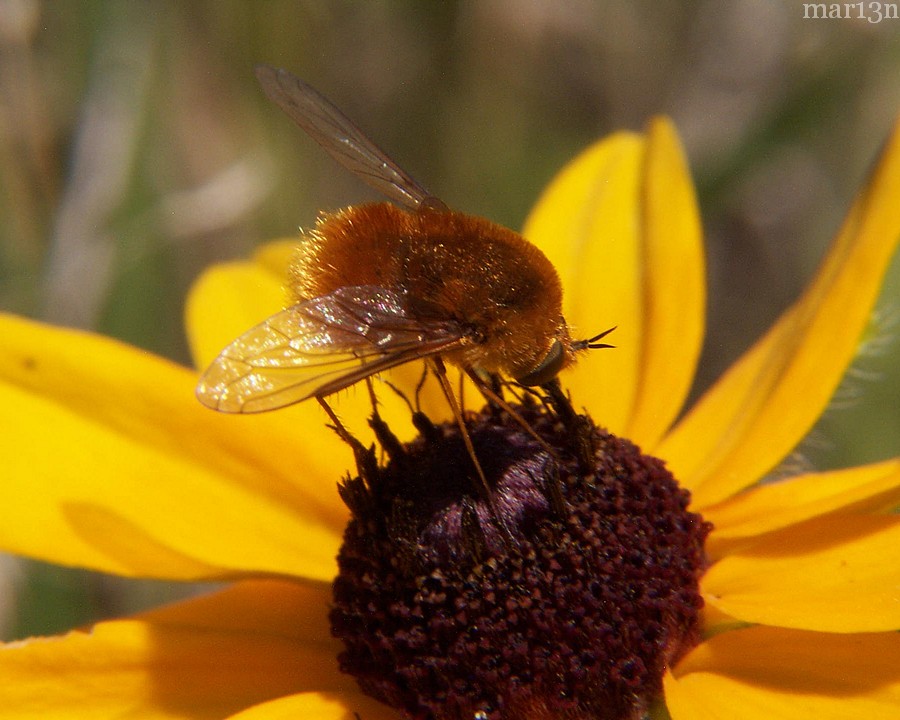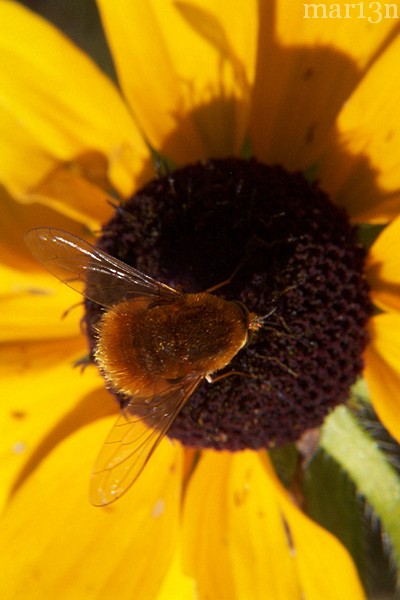Bee Fly – Systoechus vulgaris

Adult bee flies become active about the third week of April here in the American midwest. They are extremely agile and quick fliers, very wary and difficult to approach. They rarely actually alight on a flower, preferring instead to hover just above, while lowering their proboscis for nectar. I think this behavior is defense against spiders or other predators that may be lying in wait. The larval stages live as parasites in the nests of solitary bees (e.g., Andrena, Halictus and Colletes species), where they eat the food stores and grubs of their host.

 I love it when the bee flies come out, along with the dandelions – it’s a sure sign of spring. They provide a welcome excuse to get outdoors and do some camera work; these active insects can give any photographer a run for his or her money when the sun is out and things are heating up. Another place to look is in the leaf litter of your local forest, on a cloudy day when the temperature is about 50 degrees; you can find specimens sitting at rest and lethargic, like the Bobylius major pictured below. They are exquisitely camouflaged in this mileiu and seeing one that is sitting still can keep your senses sharp. Even in this torpor, they still must be approached carefully. Good clean fun and good exercise!
I love it when the bee flies come out, along with the dandelions – it’s a sure sign of spring. They provide a welcome excuse to get outdoors and do some camera work; these active insects can give any photographer a run for his or her money when the sun is out and things are heating up. Another place to look is in the leaf litter of your local forest, on a cloudy day when the temperature is about 50 degrees; you can find specimens sitting at rest and lethargic, like the Bobylius major pictured below. They are exquisitely camouflaged in this mileiu and seeing one that is sitting still can keep your senses sharp. Even in this torpor, they still must be approached carefully. Good clean fun and good exercise!
Insects & Spiders | Flies Index | Syrphidae | Bee Flies | Robber Flies
